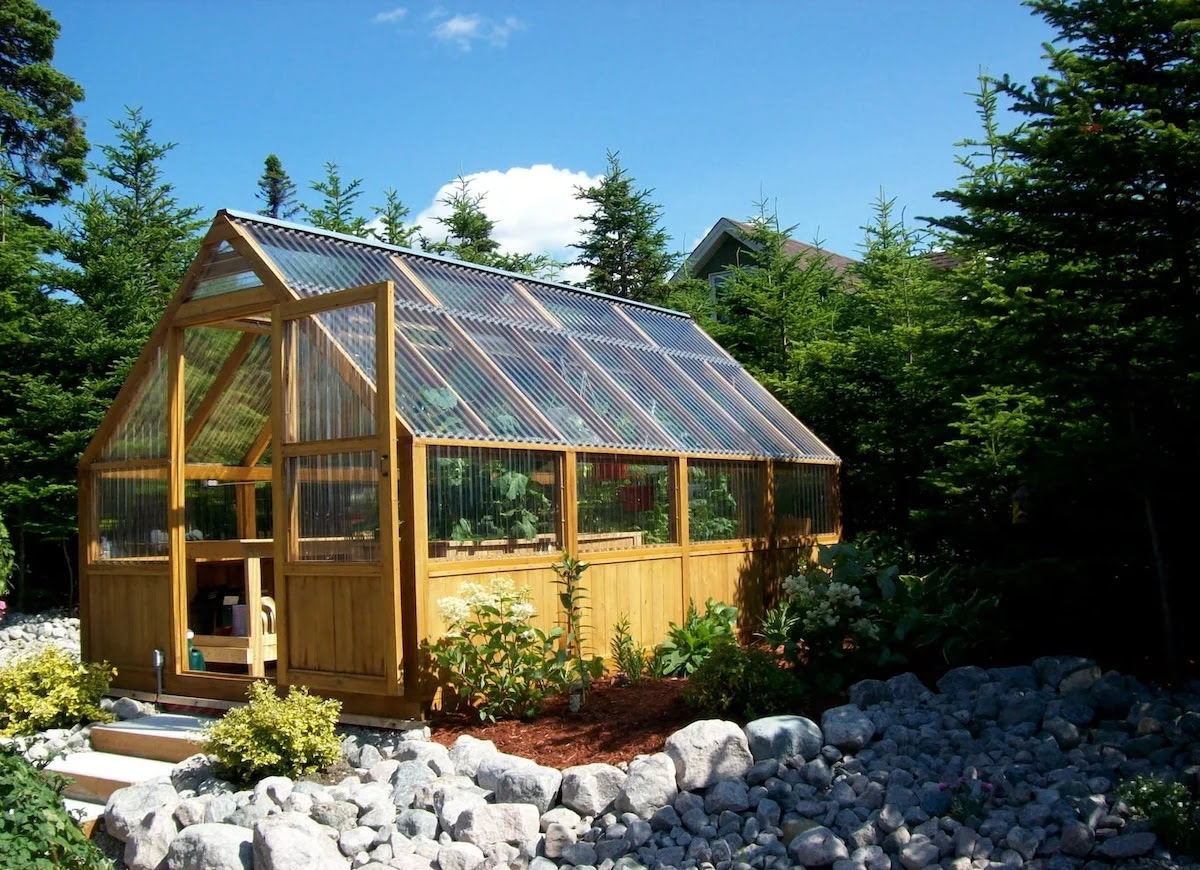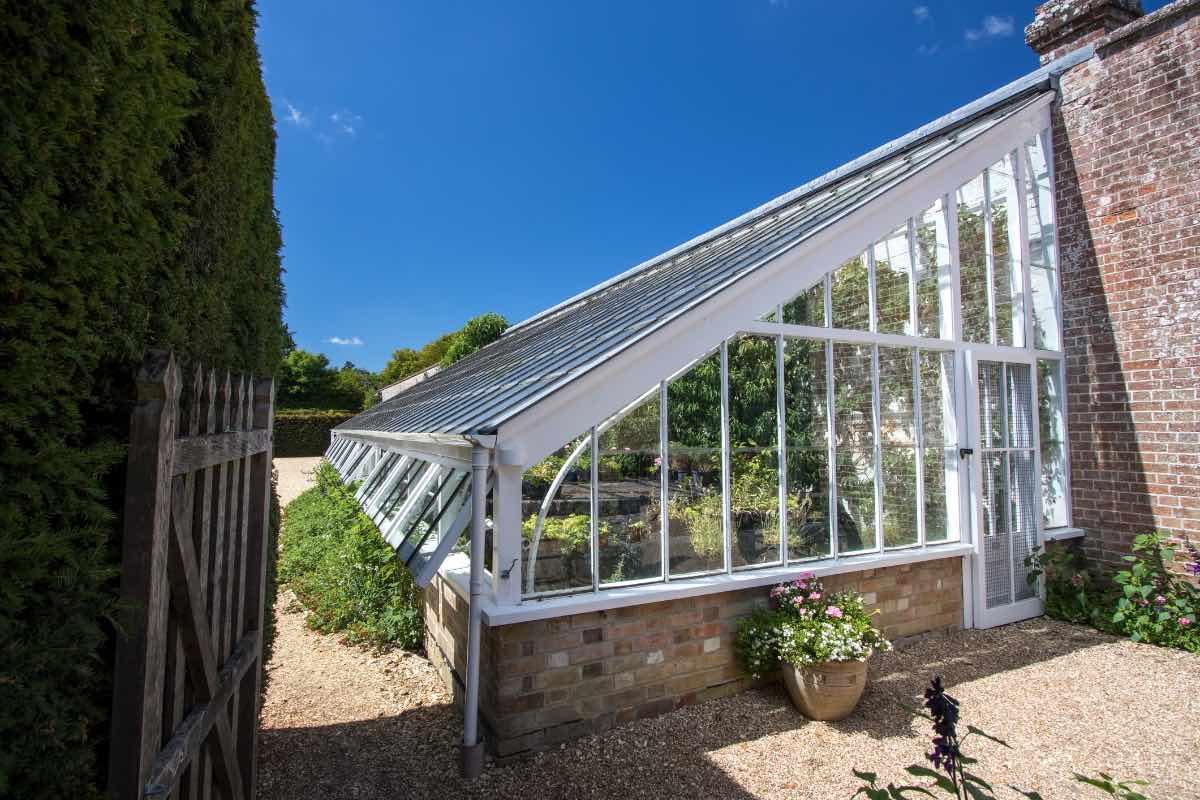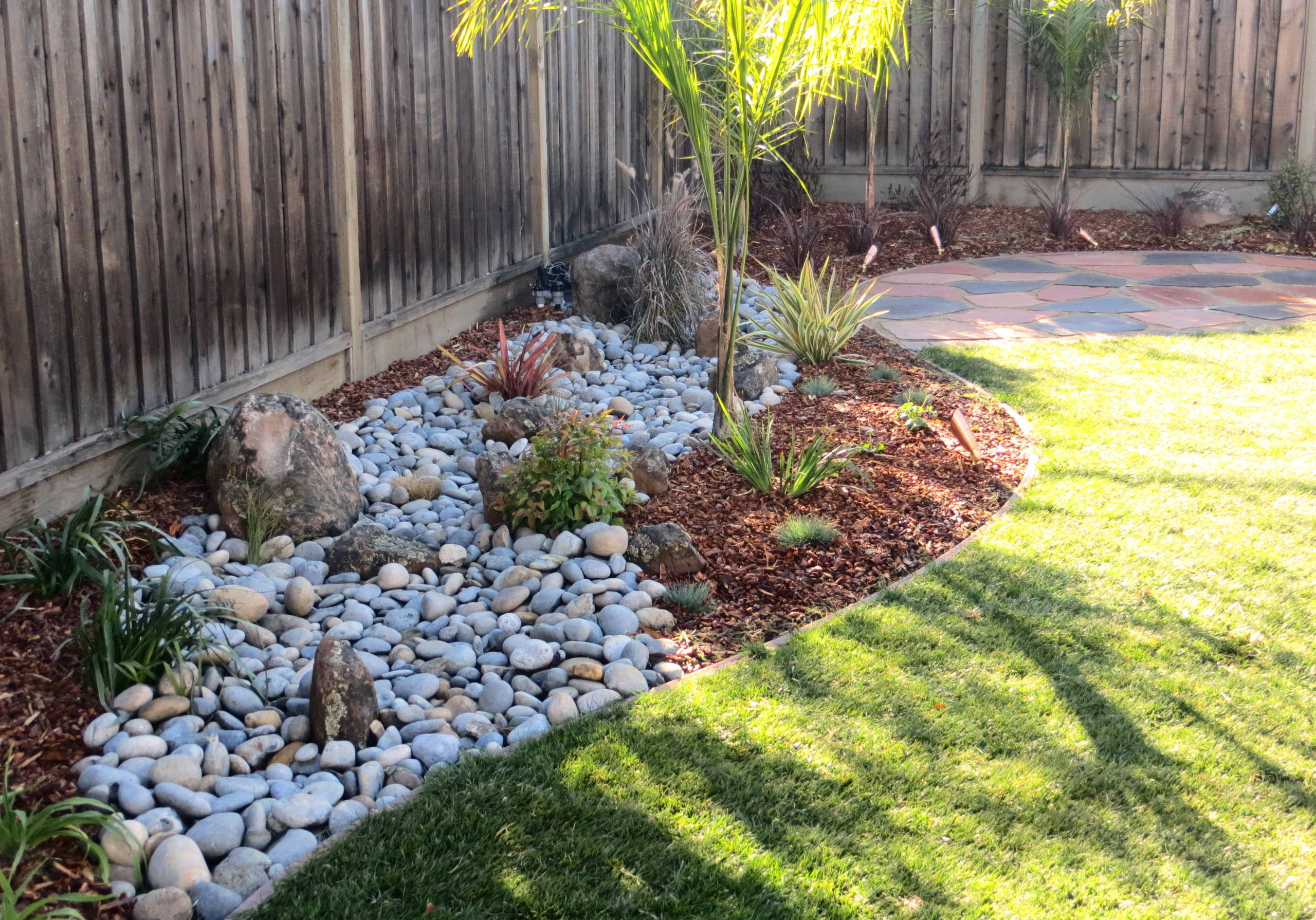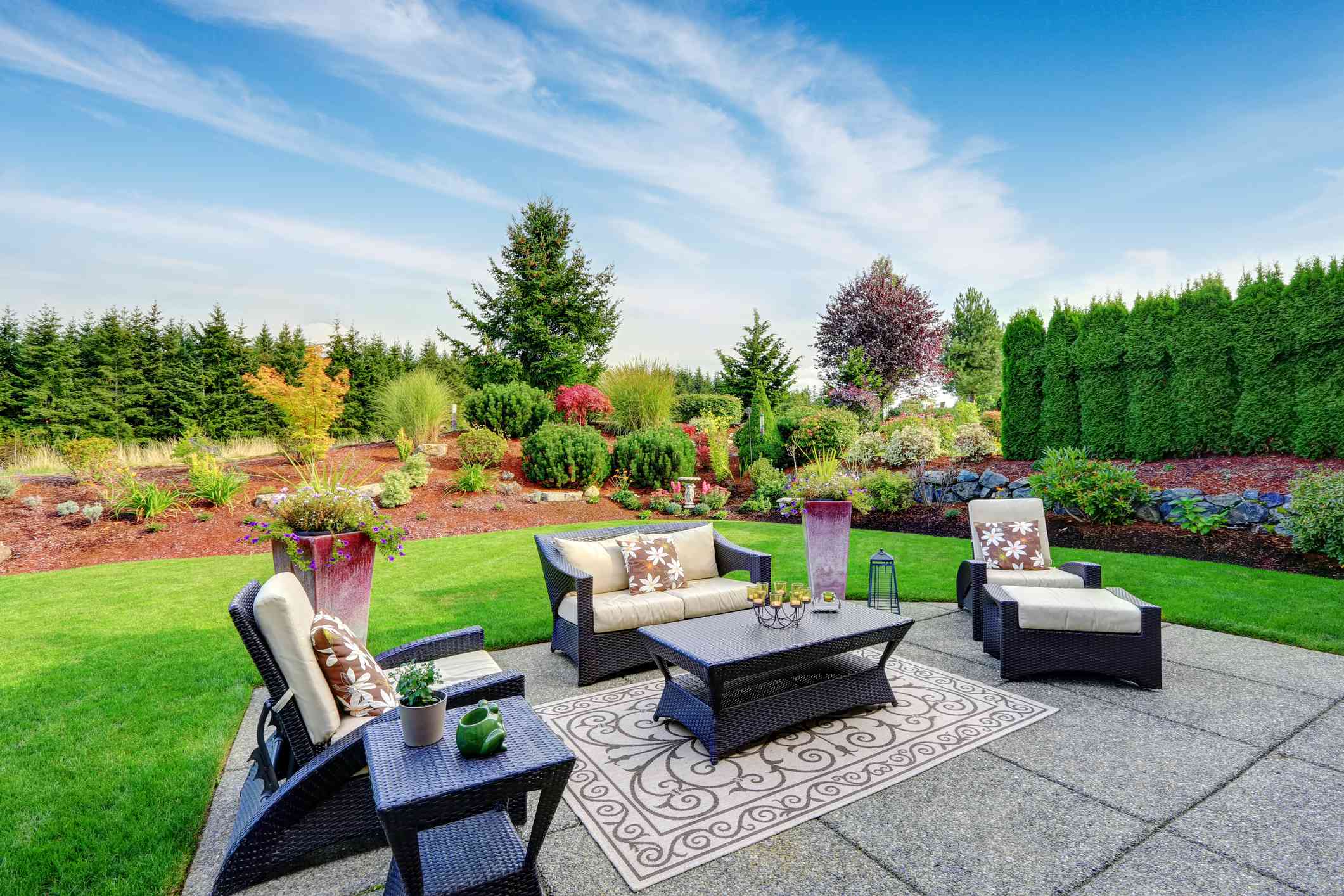Home>Garden Design>Planning Your Garden>How To Do Your Own Landscaping
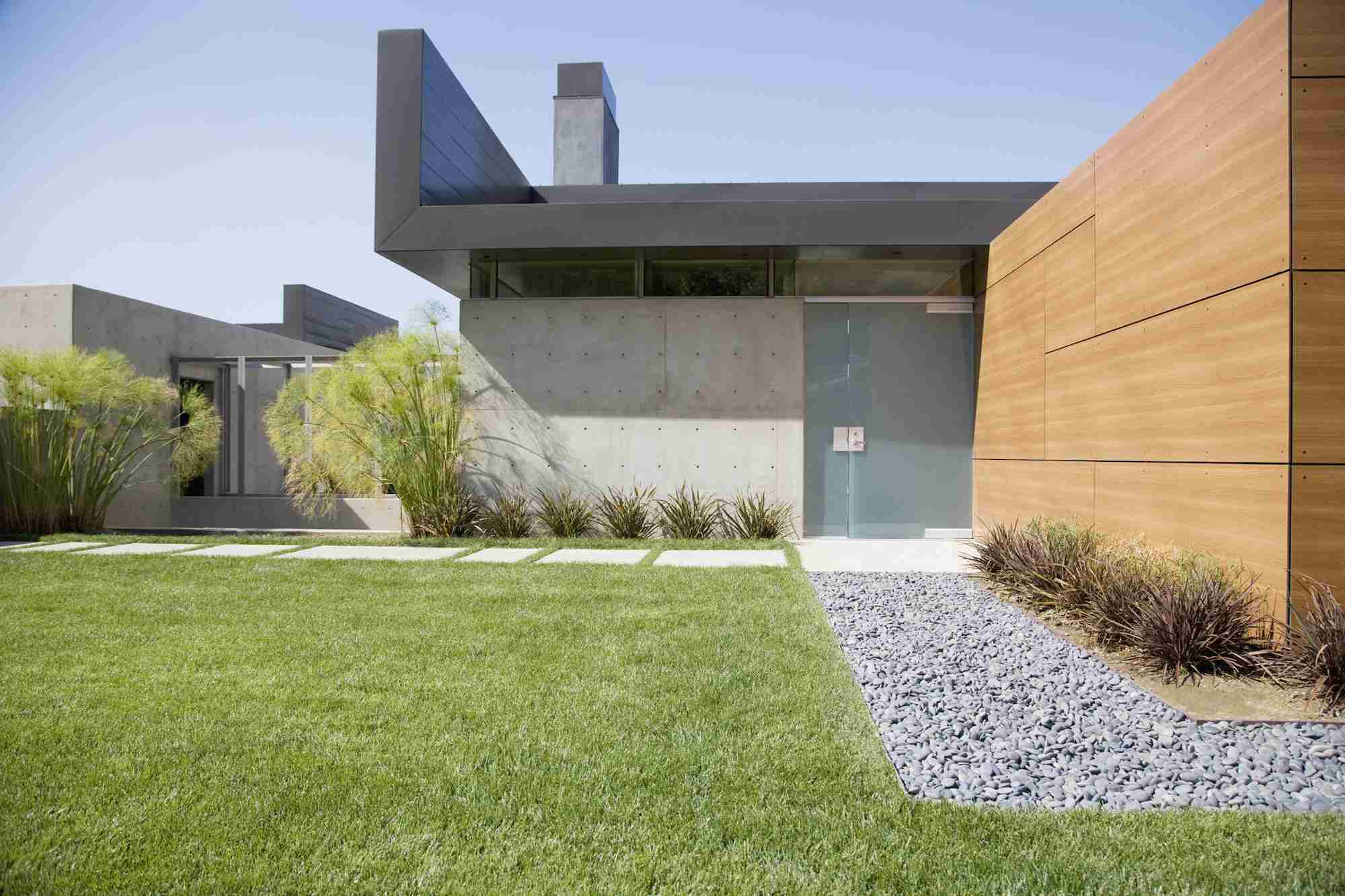

Planning Your Garden
How To Do Your Own Landscaping
Modified: January 22, 2024
Learn how to plan your garden and create stunning landscapes with our step-by-step guide on DIY landscaping. Take control of your outdoor space today!
(Many of the links in this article redirect to a specific reviewed product. Your purchase of these products through affiliate links helps to generate commission for Chicagolandgardening.com, at no extra cost. Learn more)
Table of Contents
Introduction
Welcome to the wonderful world of landscaping! Planning and creating your own garden can be a rewarding and fulfilling experience. Whether you have a small backyard or a sprawling property, designing your landscape allows you to express your creativity and create a beautiful outdoor space.
Landscaping is not just about planting a few flowers and shrubs. It involves careful planning, consideration of your space and budget, and choosing the right plants and materials that will thrive in your specific climate. This article will guide you through the process of planning and executing your own landscaping project.
By taking the time to assess your landscape, create a design plan, choose appropriate plants and materials, prepare the soil, install plants and features, and care for your landscape, you will be able to create a stunning garden that will be the envy of your neighbors.
Whether you are a gardening enthusiast or a novice, this article will provide you with the necessary knowledge and tips to embark on your landscaping journey. So grab a pen and paper, put on your gardening gloves, and let’s get started on planning your dream garden!
Assessing Your Landscape
Before diving into your landscaping project, it’s important to assess your current landscape and understand its unique characteristics. This will help you make informed decisions when it comes to design and plant selection. Here are a few key steps to assess your landscape:
- Observe: Take a walk around your property and carefully observe the existing elements. Note the size and shape of your yard, the presence of any trees, slopes, or water features, and the amount of sunlight different areas receive throughout the day. Understanding these factors will help you determine what types of plants and features will thrive in each area.
- Identify Problem Areas: Look for any problem areas such as drainage issues, erosion, or unsightly views that you would like to address through landscaping. This could involve regrading the soil, adding retaining walls or planting trees for privacy.
- Consider Functionality: Think about how you plan to use your outdoor space. Do you want a peaceful retreat for relaxation, a play area for children, or a space for entertaining guests? Assess the needs and activities that will take place in your yard, and design areas accordingly.
- Take Soil Samples: Testing your soil is essential for understanding its composition, pH levels, and nutrient content. This information will help you choose plants that are suitable for your soil type and make any necessary amendments to improve its quality.
- Budget Considerations: Evaluate your budget and determine how much you are willing to spend on your landscaping project. This will help you prioritize and make decisions on the scale and complexity of your design.
Taking the time to assess your landscape will provide you with a solid foundation for planning your garden. It will enable you to make informed decisions and ensure that your design aligns with the unique characteristics of your space. Once you have completed the assessment, you can move on to creating a design plan.
Creating a Design Plan
A well-thought-out design plan is the roadmap to a successful landscaping project. It helps you visualize the final result, organize your ideas, and make efficient use of your available space. Here are the key steps to creating a design plan:
- Measure Your Space: Start by measuring the dimensions of your yard and any existing features such as patios, walkways, or fences. This will help you accurately draw your garden layout and ensure that everything fits harmoniously.
- Determine Zones: Divide your outdoor space into different zones based on functionality and aesthetic preferences. Common zones include a seating area, a play area, a garden bed, or a water feature. Consider the size and shape of each zone to account for the flow of traffic and ensure a balanced design.
- Sketch Your Layout: Use graph paper or a design software to sketch your garden layout. Include existing features, zoning areas, and any specific design elements you envision, such as a pergola or a garden pathway. Experiment with different layouts until you find one that best suits your space and preferences.
- Select Plants and Materials: Research and select plants that are suitable for your region and match your desired aesthetic. Consider factors such as sun exposure, soil conditions, and maintenance requirements. Also, choose the right materials for hardscaping elements like walkways, patios, and retaining walls. Ensure that the plants and materials you choose complement each other and contribute to the overall design vision.
- Consider Seasonal Interest: Plan for year-round enjoyment by selecting a mix of plants that offer visual interest throughout the seasons. Incorporate a variety of flowers, shrubs, and trees that bloom at different times to maintain color and vibrancy in your garden from spring to winter.
- Seek Inspiration: Browse gardening magazines, websites, and visit local nurseries to gather inspiration for your design. Take note of landscape styles, color palettes, and planting combinations that appeal to you. Adapt and incorporate these ideas into your own design plan.
Remember, your design plan is a flexible blueprint that can evolve and adapt as you progress with your project. It’s important to consider factors such as scale, balance, and unity to create a cohesive and visually pleasing landscape. Once your design plan is complete, you can move on to selecting and preparing the soil.
Choosing Plants and Materials
Choosing the right plants and materials is crucial to the success and aesthetics of your landscaping project. Here are some key factors to consider when selecting plants and materials for your garden:
- Climate and Growing Conditions: Consider the climate and growing conditions in your area. Choose plants that are well-suited for your zone and will thrive in the available sunlight, soil type, and moisture levels.
- Size and Growth Habit: Determine the mature size and growth habit of plants to ensure they fit appropriately in your space. Avoid planting large trees or shrubs near buildings or in confined areas where they may cause damage or overcrowding.
- Maintenance Requirements: Consider the amount of time and effort you are willing to invest in maintenance. Choose plants that match your maintenance preferences, whether it’s low-maintenance options or more hands-on care.
- Color and Texture: Select plants that complement each other in terms of color and texture. Incorporate a variety of foliage colors, flower shapes, and textures to create visual interest and depth in your garden.
- Native and Adapted Plants: Consider incorporating native or adapted plants into your design. These plants are naturally suited to the local environment and require less water, fertilizer, and pesticides.
- Hardscaping Materials: Choose materials for hardscaping elements such as walkways, patios, and retaining walls that harmonize with your overall design. Consider factors such as durability, cost, and aesthetic appeal when selecting materials.
- Sustainability: Incorporate sustainable practices into your landscaping by choosing environmentally friendly materials and using water-efficient irrigation systems. This will not only benefit the environment but also help you save on water and maintenance costs.
Additionally, consult with local nurseries or gardening experts to get advice on plant varieties that are well-suited for your specific region. They can provide valuable insights on plant selection, care tips, and potential pests or diseases to watch out for.
By carefully choosing plants and materials, you can create a harmonious and visually appealing landscape that reflects your personal style and thrives in your specific environment. Once you have selected your plants and materials, it’s time to prepare the soil in your garden.
Preparing the Soil
Preparing the soil is a critical step in establishing a healthy and thriving garden. Properly preparing the soil will provide a strong foundation for your plants and help them grow vigorously. Here are some essential steps to prepare your soil:
- Remove Weeds and Debris: Start by clearing the area of any weeds, rocks, or debris. This will create a clean slate and ensure that your plants have the best chance of establishing themselves without competition from unwanted vegetation.
- Test the Soil: Conduct a soil test to determine its pH level and nutrient content. Test kits are available at garden centers or through local agricultural extension offices. The results of the soil test will guide you in making any necessary amendments to improve the soil.
- Amend the Soil: Based on the soil test results, you may need to add organic matter such as compost, well-rotted manure, or peat moss to improve the soil’s fertility, structure, and drainage. Work these amendments into the top few inches of soil using a garden fork or tiller.
- Break Up Compacted Soil: If your soil is compacted, use a garden fork or a mechanical aerator to gently loosen it. This will improve its texture and allow the roots of your plants to penetrate more easily.
- Level the Soil: Ensure the soil is evenly leveled and free of any major depressions or mounds. This will provide a smooth surface for planting and prevent water from pooling in certain areas.
- Provide Drainage: If your soil has poor drainage, consider incorporating organic matter or creating raised beds to improve water infiltration. Proper drainage is essential for preventing waterlogging and root rot.
- Water the Soil: Before planting, thoroughly water the soil to ensure it is moist. This will help settle the soil and create an ideal environment for root growth.
Remember, healthy soil is the key to a healthy garden. By taking the time to prepare your soil properly, you are setting your plants up for success and giving them the best conditions to thrive. Once the soil is prepared, it’s time to move on to the exciting part – installing your chosen plants and features into your garden.
Installing Plants and Features
Now that you have prepared your soil, it’s time to bring your garden to life by installing your chosen plants and features. This stage is where your landscape design truly starts to take shape. Here are the key steps to installing plants and features:
- Start with the Hardscape: Begin by installing any hardscape elements such as walkways, patios, or retaining walls. Follow your design plan and ensure that these features are level, properly aligned, and securely installed.
- Plant Trees and Shrubs: Begin planting trees and shrubs, as they are the backbone of your garden. Dig holes that are slightly wider and deeper than the root balls, and gently loosen the roots before placing them in the ground. Backfill the hole with soil, firmly but gently pressing it down to remove air pockets.
- Install Flower Beds: Install your flower beds, considering their size, shape, and spacing. Arrange plants according to their mature size, placing taller plants towards the back and smaller ones towards the front. Mulch the beds with organic material to help retain moisture and suppress weeds.
- Add Perennials and Annuals: Incorporate perennials and annuals into your design, adding pops of color and seasonal interest. Dig holes for each plant, ensuring they are at the appropriate depth, and space them according to their growth habit and mature size. Water thoroughly after planting.
- Integrate Garden Features: Install any additional garden features such as water features, sculptures, or lighting. Ensure that they are properly positioned and functioning as intended.
- Water and Mulch: After planting, water your newly installed plants deeply to help them establish. Apply a layer of mulch around the base of the plants to conserve moisture, suppress weeds, and regulate soil temperature.
- Follow Care Instructions: Follow the care instructions for each plant, providing them with the appropriate amount of water, sunlight, and fertilization. Regularly inspect your garden for pests or diseases and take proactive measures to address any issues that arise.
As you install your plants and features, step back frequently to assess the overall design and make any adjustments if necessary. Remember, gardening is a creative and flexible process, so don’t be afraid to make changes along the way to achieve your desired vision.
With your plants and features successfully installed, your garden is well on its way to becoming a beautiful and inviting outdoor space. Now, let’s explore how to care for your landscape to ensure its long-term health and beauty.
Caring for Your Landscape
Caring for your landscape is essential to maintain its health, beauty, and longevity. Regular maintenance and proper care practices will ensure that your garden thrives and continues to bring you joy for years to come. Here are some key steps to caring for your landscape:
- Watering: Water your plants deeply and consistently, ensuring they receive an adequate amount of moisture. The watering needs will vary depending on the plant species, weather conditions, and soil type. Avoid over-watering or under-watering by monitoring the soil moisture and adjusting your watering schedule accordingly.
- Weeding: Regularly weed your garden to prevent unwanted plants from competing with your desired plants for nutrients, water, and sunlight. Use hand-pulling or appropriate weeding tools to remove weeds at the root level.
- Pruning: Prune your trees, shrubs, and perennials as needed to maintain their shape, remove dead or diseased branches, and promote healthy growth. Follow proper pruning techniques and timing for each plant variety.
- Fertilizing: Apply fertilizers to provide essential nutrients to your plants. Use organic or slow-release fertilizers to prevent the risk of burning the plants and ensure a steady and balanced nutrient supply. Follow the recommended rates and timings for fertilization based on the specific needs of your plants.
- Pest Control: Monitor your garden for any signs of pests or diseases and take appropriate measures to control them. This may include using organic pest control methods, such as handpicking pests or introducing beneficial insects, or using targeted treatments when necessary.
- Mulching: Regularly refresh the mulch layer around your plants to help retain moisture, regulate soil temperature, and suppress weeds. Maintain a depth of 2-4 inches of mulch, ensuring that it is pulled back from the base of the plants to prevent rotting.
- Seasonal Maintenance: Adjust your maintenance tasks according to the changing seasons. This may include winterizing your garden, protecting delicate plants from frost, and providing extra care during extreme weather conditions.
- Regular Inspections: Regularly inspect your garden for any signs of problems, such as plant stress, diseases, or nutrient deficiencies. Early detection and prompt action can help prevent or mitigate potential issues.
- Education and Learning: Continuously educate yourself about proper gardening techniques, plant care, and landscape management. Stay updated on the latest trends and best practices to ensure that you are providing the best care for your garden.
Caring for your landscape is an ongoing task, requiring dedication and attention to detail. By implementing proper care practices, your garden will flourish and provide you with a beautiful and enjoyable outdoor space.
Now that you know how to care for your landscape, it’s time to put your knowledge into action and start creating your dream garden. With careful planning, thoughtful plant selection, and regular maintenance, your garden will become a haven of natural beauty and a source of pride.
Conclusion
Congratulations on completing your journey towards planning and creating your own garden! By assessing your landscape, creating a design plan, choosing the right plants and materials, preparing the soil, installing plants and features, and caring for your landscape, you have learned the key steps to transforming your outdoor space into a beautiful and inviting garden.
Remember, landscaping is a dynamic process that requires ongoing care and maintenance. Regular watering, pruning, fertilizing, and pest control are essential to ensure the health and longevity of your plants and the overall beauty of your garden. Stay vigilant and address any potential issues as they arise to prevent larger problems down the road.
Continue to educate yourself about gardening techniques, explore new plants and design ideas, and connect with other gardening enthusiasts to exchange knowledge and inspiration. Gardening is a never-ending journey of learning and discovery.
As you work on your garden, take the time to step back and appreciate the fruits of your labor. A well-designed landscape not only enhances the appeal and value of your property but also provides a space for relaxation, connection with nature, and enjoyment of outdoor activities.
So, grab your gardening tools, put your plans into action, and watch your garden come to life. With patience, dedication, and a little bit of creativity, you can create a garden that reflects your unique style and brings joy to your life for years to come.
Now, go out and embrace your green thumb, and may your new garden be a source of happiness and inspiration!
